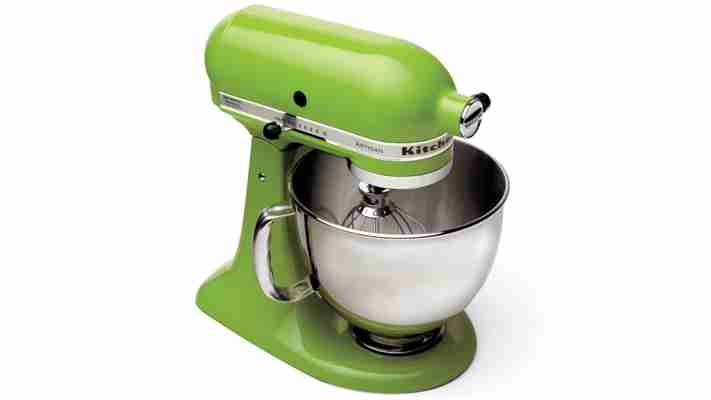Stand mixers come in an array of sizes, generally distinguished by the volume of the mixing bowl: Some brands even offer miniature sizes for more compact kitchens, smaller yields, and people who have trouble moving the heavier, more unwieldy models.

They also come in two general styles: tilt-head and bowl-lift. With a tilt-head, the mixer’s head, where the engine lives, lifts up out of the mixing bowl. For the latter, the bowl itself raises until its contents make contact with the mixing attachment. Generally, the bowl-lift varieties are better for people working with large batches, as they’re typically equipped with larger bowls
While stand mixers are often dismissed as an unnecessary baking splurge (and, yes, they’ll put you out anywhere from $200 to $500), they can be real game changers. They’re essential for anyone baking with an injury or disability, and they also make life easier for people who just prefer to avoid the intensive work of kneading or creaming for long periods of time (ahem, me).
What makes them even more essential is their set-it-and-mostly-forget-it potential. Stand mixers don’t require the babysitting or upper body strength of other methods. Plus, they do a more thorough and more impactful job than you could do manually (no offense). Just set a timer, crank up your mixer, and come back right when things are ready. And stand mixers aren't only for baking: They come with a brilliant array of attachments. Save up for the ice cream maker, or the pasta roller, or the spiralizer and that’s three fewer appliances to add to your wish list.
Unless you're game to knead for 25 minutes, you'll want a stand mixer to make this milk bread. Photo by Alex Lau, Food Styling by Pearl Jones
But really: Do you need one? If you’re a minor league baker, probably not. When stirring together a batch of cookies or a tray of brownies, a good old wooden spoon will likely do the trick. But if you’re looking to make pillowy brioche, towering peaks of stiff meringue, sweeping spreads of focaccia, or decadent buttercream frosting, you can’t do without it.
In sum: A stand mixer is not the end-all-be-all of your baking life, but it makes everything a hell of a lot easier.
If you’re intrigued by the idea of owning one but worry about whether you’ll make the most of it, here’s a good test: Start with a trusty hand mixer. Once you’ve gotten a better understanding of how often you use it (or how often you find it can’t do an adequate job and you need something heftier), then make your decision. It's okay to ease in slowly—stand mixers aren’t going anywhere (in fact, the longer you wait, the better the selection of colors and special edition models to choose from).
